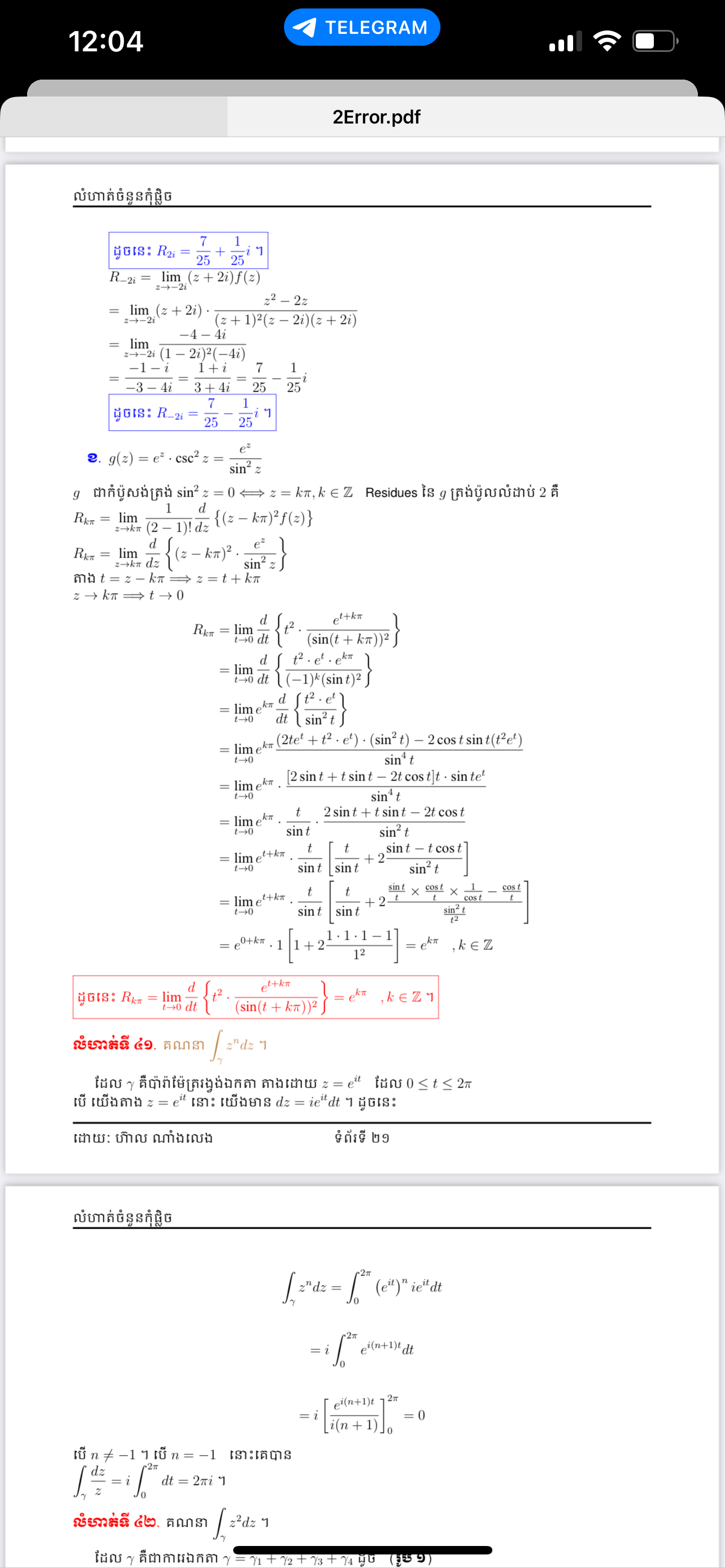
Understand the Problem
The image contains mathematical expressions focused on residues and integrals in complex analysis. It appears to work through specific calculations related to the residues of complex functions, specifically to evaluate integrals involving complex numbers and trigonometric functions.
Answer
The integral \( \int_{\gamma} z^n dz \) equals \( 0 \) for \( n \neq -1 \) and \( 2\pi i \) for \( n = -1 \).
Answer for screen readers
The integral ( \int_{\gamma} z^n dz ) equals:
- ( 0 ) for ( n \neq -1 )
- ( 2\pi i ) for ( n = -1 )
Steps to Solve
-
Define the problem We are evaluating the integral of ( z^n ) along a closed curve ( \gamma ).
-
Set up the integral The integral can be expressed using the parameterization of the curve: $$ \int_{\gamma} z^n dz = \int_{0}^{2\pi} (e^{it})^n \cdot ie^{it} dt $$
-
Simplify the integral This integral simplifies to: $$ = i \int_{0}^{2\pi} e^{i(n+1)t} dt $$
-
Evaluate the integral Using the integral of the exponential function, we have: $$ = i \left[ \frac{e^{i(n+1)t}}{i(n+1)} \right]_{0}^{2\pi} $$
-
Calculate the limits Substituting the limits into the expression gives: $$ = i \left( \frac{e^{i(n+1)(2\pi)} - e^{i(n+1)0}}{i(n+1)} \right) = \frac{e^{2\pi i(n+1)} - 1}{n+1} $$
-
Determine the result If ( n ) is not equal to -1, ( e^{2\pi i(n+1)} = 1 ), thus: $$ = \frac{1 - 1}{n+1} = 0 $$
If ( n = -1 ): $$ \int_{\gamma} \frac{1}{z} dz = 2\pi i $$
Conclusion: The integral evaluates to ( 0 ) when ( n \neq -1 ) and ( 2\pi i ) when ( n = -1 ).
The integral ( \int_{\gamma} z^n dz ) equals:
- ( 0 ) for ( n \neq -1 )
- ( 2\pi i ) for ( n = -1 )
More Information
The integral of ( z^n ) over a closed curve relates to the concept of residues in complex analysis. For ( n \neq -1 ), the function is holomorphic inside the curve, leading to a value of zero by the Cauchy-Goursat theorem. The special case for ( n = -1 ) reflects the residue at a simple pole.
Tips
- Confusing the results for ( n = -1 ) with those for other values of ( n ).
- Forgetting the parameterization of the integral, which can lead to incorrect evaluations.
AI-generated content may contain errors. Please verify critical information